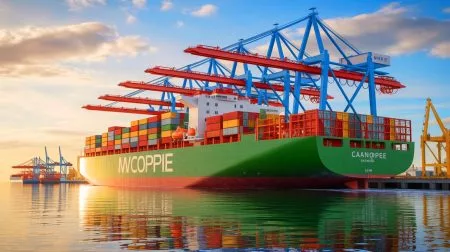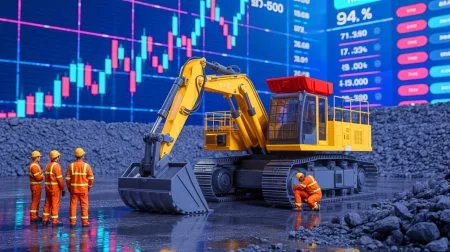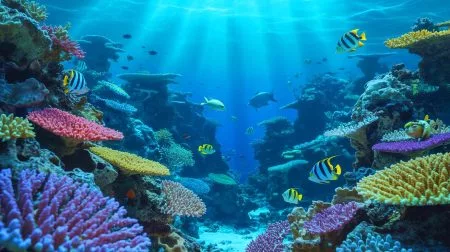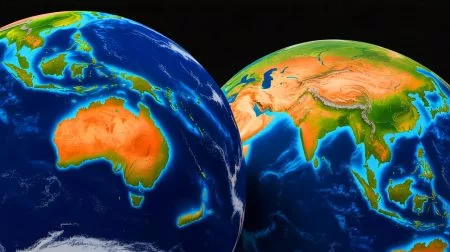As diverse sustainability advocates strive to save the planet, a group of actors stands out from the crowd in its approach to the challenge. And the potential of visions and solutions this group offers may be no less transformative than the purely science-driven or policy-based methods we are well used to. Here come sustainability artists and art-science innovators, trespassing the boundaries of the possible.
Artistic communities have been exploring human-nature interactions since the dawn of mankind, yet rapid environmental change has sparked a renewed interest in the issue. Some artists focus on their work’s sustainable materials or properties, while others put all the efforts into evoking particular feelings, delivering the message or discovering new sustainable futures. Their contributions vary widely, ranging from purely aesthetic explorations of vanishing biodiversity to confident manifestos and art-science innovations that bring about social change.
Yes, Naturally, an exhibition featured at the Gemeentemuseum in Hague, Netherlands, is among the most interesting creative explorations into the issue, focusing on how technology, culture and nature co-evolve together. Among the works of 80 artists on display you could witness mobile phones replacing human memories and online networks serving as our habitats, or biotope.
Human nature merges with technology as nanoparticles become organic parts of our bodies, while wild nature embraces technological intervention in a huge waterlily by Keith Edmier, combining polyester, silicon and natural flower pollen. Even in pristine form, nature continues to shrink its opportunities, as resembled by Mark Dion’s “Mobile wilderness” – the statue of a wild wolf on a small piece of land in a car trailer, an animal with once large populations that has now been almost driven to extinction in most of its former habitats.
Another event, a Feverish World Symposium, organised this October by the Eco Culture Lab at the University of Vermont, sought to explore how the arts and sciences can interact for our collective survival. The symposium gathered more than 50 artists and scientists focusing on developing more responsive relations between humans and other forms of life through music, sculpture, dance and philosophical discussions.
An experimental performance by eco-philosopher and interspecies musician David Rothenberg and eco-artist Linda Weintraub used nudging words and sounds to help participants imagine different possible futures, while deep listening workshops by Anne Bourne encouraged participants to imagine and remember how nature sounds to them and what kinds of music this can evoke through collaborative composition techniques.
Chard deNiord shared his poems that try to dive a bit deeper into the wonders of nature, among which What The Animals Teach Us just can’t be missed. The performances beautifully alternated with lectures and discussions by prominent figures like philosopher and founder of Experimentation in Art and Politics innovative master’s programme Bruno Latour on reconsideration of our relations with the Earth beyond national and political interests. Meanwhile, interdisciplinary artist Torkwase Dyson explored how environmental justice is mediated through almost every sphere of life, including architecture, infrastructure and abstract art.
As science and art dive deeper into the wonders of nature, they often start to intersect, particularly in fields that require both types of expertise. One outstanding example is work done by Neri Oxman from MIT, a designer, artist and architect with deep knowledge of synthetic biology and material engineering. Oxman is a founder of material ecology, a field focusing on collaborative co-creation of architectural and design outcomes by humans with other forms of life through the help of computing.
Her contributions to the field of environmental design trespass the boundaries between culture, nature and technology through projects like Silk Pavilion, an architectural form combining robot-built structures with silk created by worms on a nylon frame. Another example is Synthetic Apiary, an installation exploring the behavior of bees in an indoor environment; for example by revealing how bees build hives on diverse types of structures. These kinds of experiments further allow Oxman to create fiberbots that collaborate like insects, building large installations from the ground-up, or invent self-growing and living clothes and buildings.
Oxman’s work is deeply rooted in a philosophy that turns away from treating matter as a resource to be consumed and wasted towards a treatment of it as a biological resource that can be transformed, contributing to the further unfolding of life in a multitude of ways. This brings us to her ambitious suggestion on moving from “design inspired by nature to nature inspired by design”.
Another transdisciplinary art-scientist, working within biochemistry, engineering and experimental design for social change is Natalie Jeremijenko, who has opened an Environmental Health Clinic, which helps people with recipes on what can be done to improve their local environment through small artistic interventions like creating noticeable and subversive urban gardens on the car parking spaces.
An intensifying communication between art and science has also led to emergence of projects like Dance your PhD by the journal Science, where scientists are invited to communicate their findings in an original interpretative dance, stepping outside the box of the usual peer-reviewed publishing. The competition has recently celebrated its 11th anniversary and has over years featured a lots of sustainability related projects on issues like star ecology, changes in sea ice cover and impact of tornadoes on plant-soil feedbacks among others.
Finally, when art and science unite, it’s much easier to create integrative narratives that can speak to a wide range of audience members, like The Human Quest book by sustainability researcher Johan Rockström and renowned photographer Mattias Klum, bringing together the scientific and the imaginary behind the planet at the edge of multiple ecological regime shifts. These kinds of communicative practices can be invaluable in turning harsh scientific facts into livable and vivid realities that people can understand and embrace.
Based on these examples, we can witness how artists and art-science pioneers tread where old-style academics, politicians and businessman do not. Ranging from critiques to experimental demonstrations, they help us to experience the implications of rapid environmental changes, opening new perspectives, which are quite different from much of the science that usually demands a single interpretation of phenomena.
Still, even scientists are starting to increasingly consider art as an important contribution to the “quest for culture of sustainability”, according to Maria Heras, who conducts research on transformative learning for sustainability at the Institute of Environmental Science and Technology. She thinks that art can help us all to shift individual and collective boundaries of sustainability action. Practicing arts may also help improve our capacities for dealing with novel ecological complexity and uncertainty, deepening understanding of our actions and capabilities going beyond the dominating analytical perspective.
According to an article by Marten Scheffer from the Wageningen Agricultural University and his co-authors of the paper on dual thinking for scientists in the special issue on arts and science for sustainability in Ecology and Society journal, it is the “intimate tango” of intuition and reason that can give birth to the greatest discoveries. Scheffer and his colleagues suggest that artistic methods of exploration can and should also be brought into the very heart of research, helping scientists deal with sustainability challenges as they harness the power of art. They argue that we can learn a great deal from how artists relate to the world, thereby thinking of solutions not only at our desk and in our meeting rooms, but also during walks in the woods.
The arts may help scientists achieve “cognitive regime shifts” to “imagine the unimaginable”, learning to better feel and understand the complexity of the surrounding world. This brings us to the philosopher David Wood, who in his essay “Can Only Art Save Us Now?” suggests that practicing arts can help us reconsider our usual living patterns, detach us from consumerist lifestyles and open us to new ways of relating with the world so as to live with more respect, wonder and consideration towards the fragile and beautiful planet we inhabit.
Did you like it? 4.3/5 (23)







